The thing that South Dakota is perhaps best known for is Mount Rushmore National Memorial. Sculpted over the course of more than a decade, it features the faces of four presidents – George Washington, Thomas Jefferson, Abraham Lincoln and Theodore Roosevelt.
Mount Rushmore is on the western side of South Dakota, so we visited it while staying in Rapid City as it’s only about 30 minutes southwest of there.
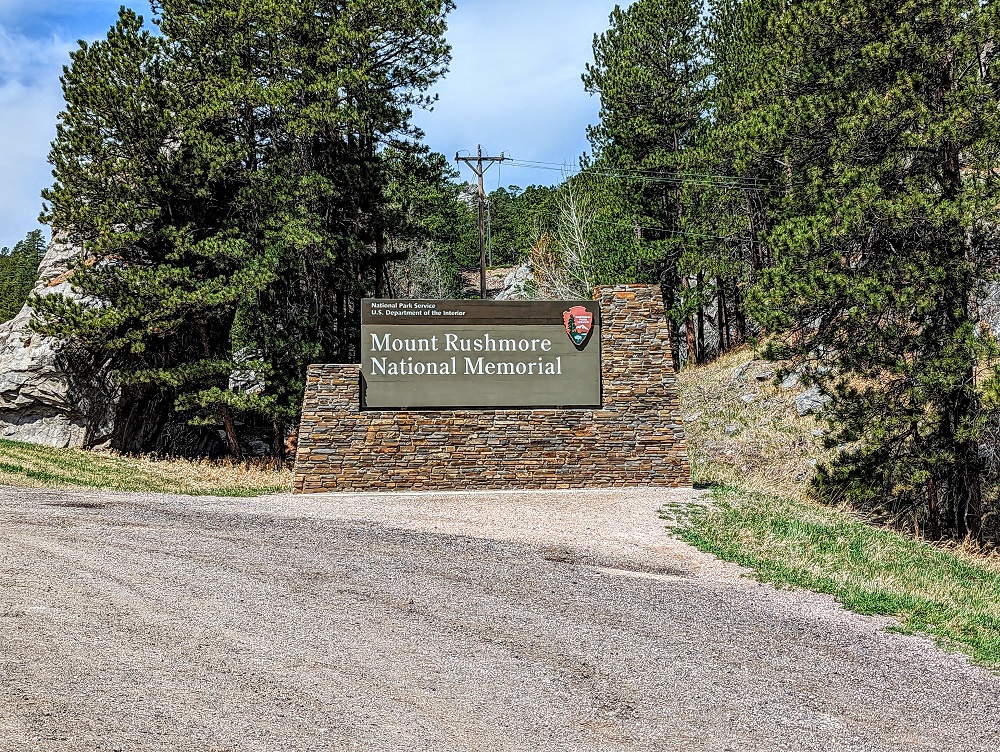
On the drive up there, you can see the granite faces from a distance.

Mount Rushmore Fees
Mount Rushmore is run by the National Park Service and is – in theory – free to visit. However, there are parking fees and given its location, you’d be hard pressed to visit without needing to park there.
Here’s how much the Mount Rushmore parking fees were when we visited in May 2023:
- Cars, motorcycles & RVs
- $10 per vehicle
- $5 per vehicle for seniors (ages 62+)
- Free – active duty military
- Parking tickets provided unlimited entry for one year from your date of purchase
- Nonprofit educational buses
- $25
- Valid for 24 hours from time of first entry
- Commercial tour buses
- $50
- Valid for 24 hours from time of first entry
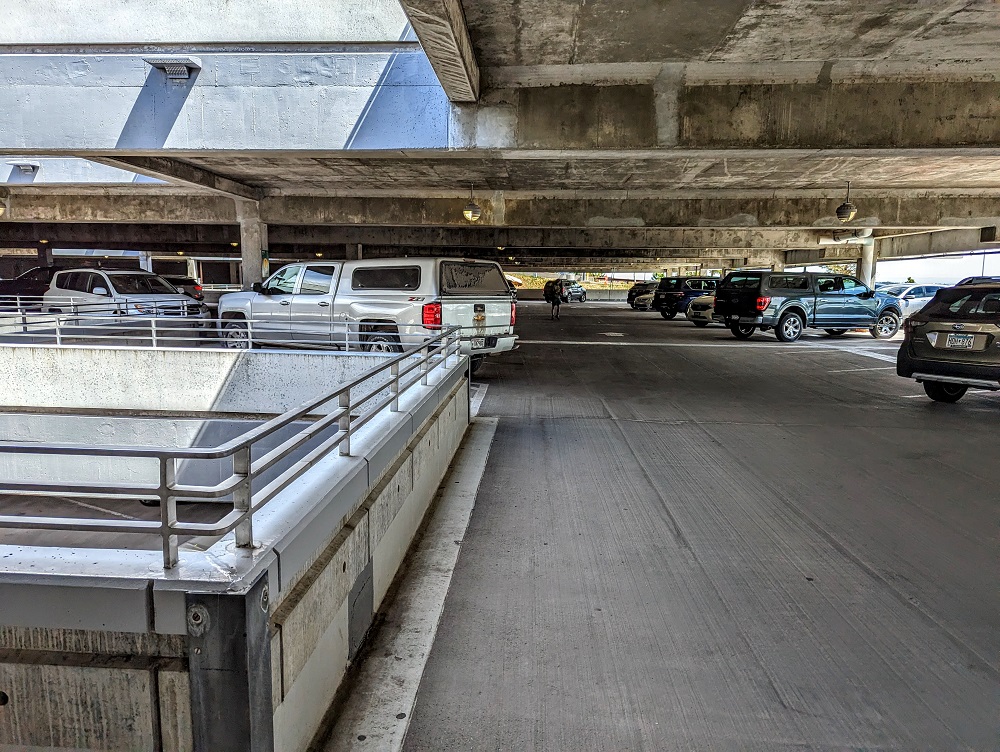
Mount Rushmore Pet Policy
Mount Rushmore isn’t the most pet-friendly place in the world, but they do accommodate dogs pretty well, especially if you’re not traveling alone. Dogs are allowed in parking garages, outside of the developed area and in the pet exercise area. They’re allowed up to the main pergola, but not further.
We visited with our dog Truffles, so Shae and I took it in turns to go closer to the mountain, go in the visitor center, etc., with the other one of us staying outside with her. There are several benches you can sit on, so there was a row of us pet parents doing the same thing!
Things will be trickier if you’re traveling solo with your pup. If the worst comes to the worst, you can see Mount Rushmore from the main pergola just before you reach the cutoff point for dogs.
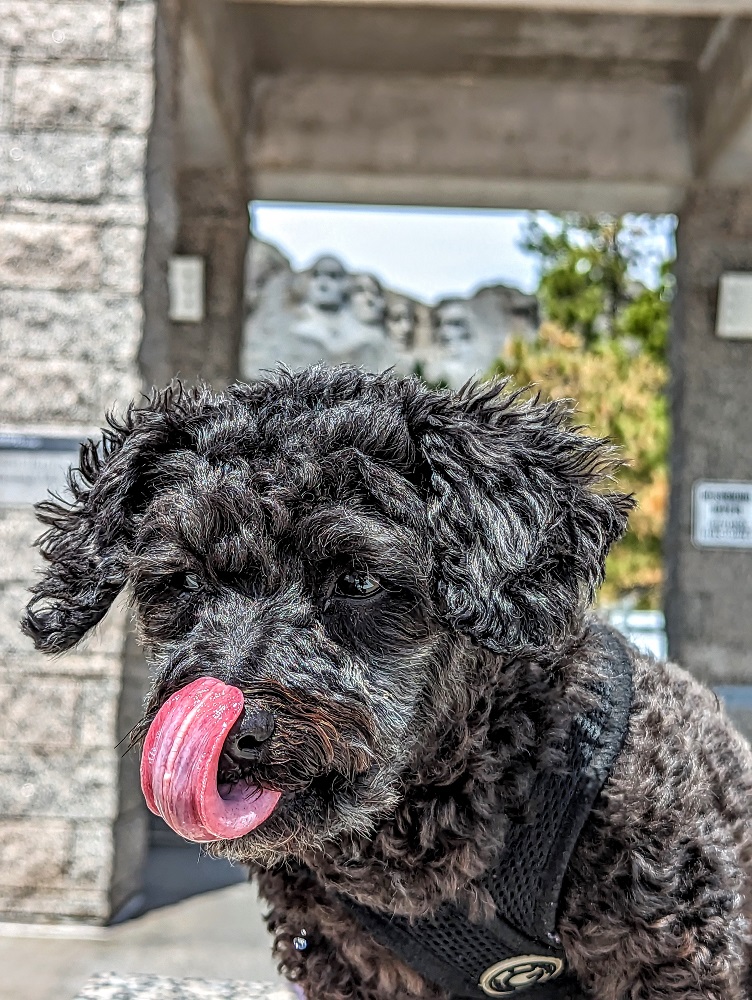
Visiting Mount Rushmore
Shae went in first while I waited with Truffles, then we switched. Even from a distance, you get a magnificent view of the memorial.
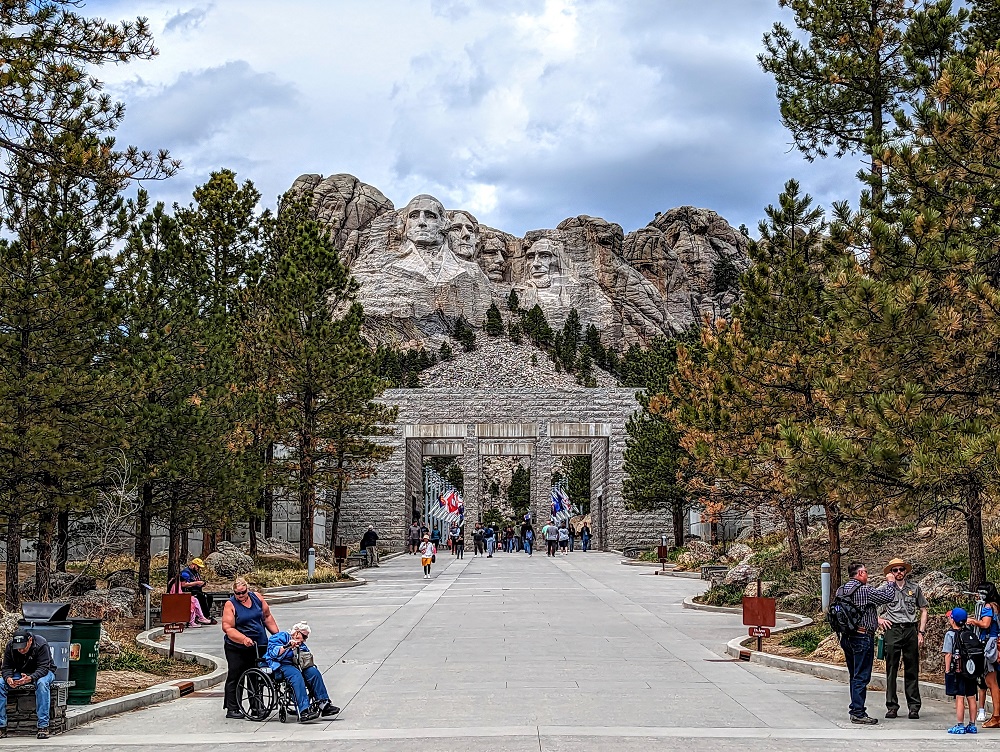
More than 400 people worked on the construction of Mount Rushmore National Memorial and their names are all commemorated on a plaque as you walk through. Somewhat remarkably, much like with the Gateway Arch in St Louis, no workers died during its construction.
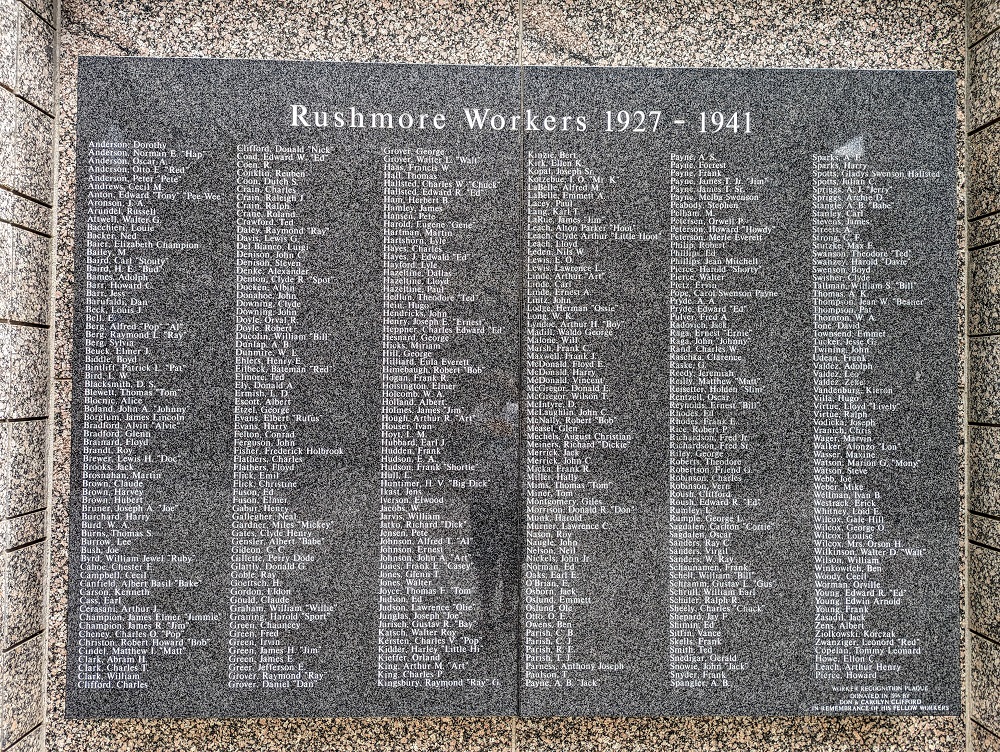
The Avenue of Flags, which features the flags of each state, leads you further up towards the memorial.
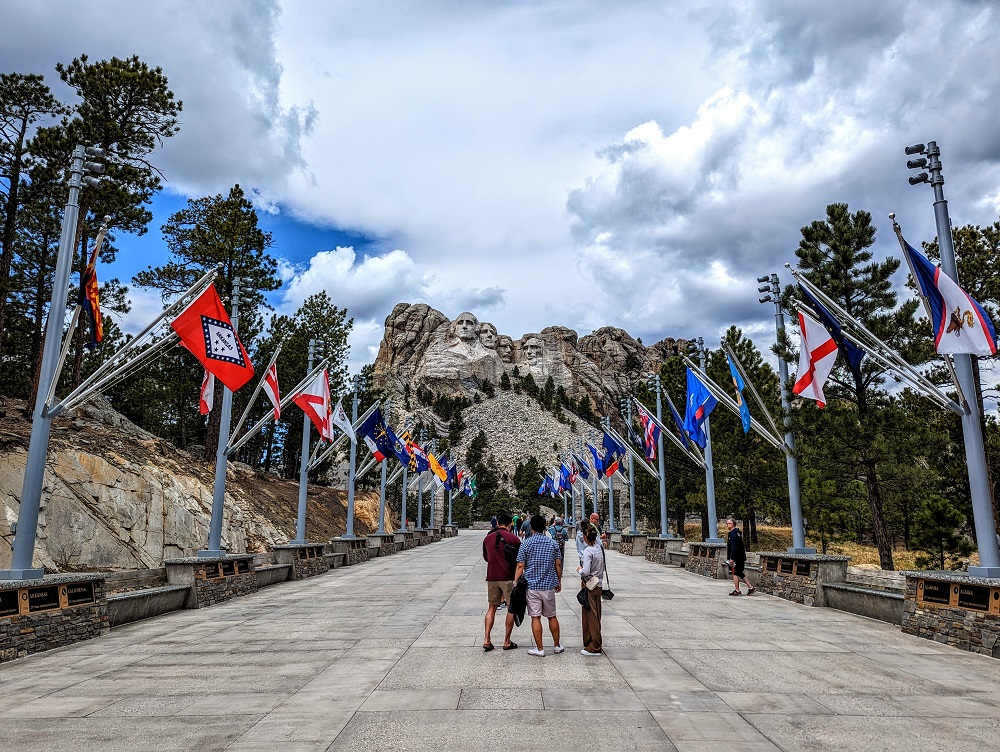
Seeing Mount Rushmore in person was far more impressive than I’d been expecting. I’ve seen it many times before on TV and in movies, but being there in person seeing these accurate faces carved into the granite rock face gave a better appreciation for how much work must’ve gone into it.
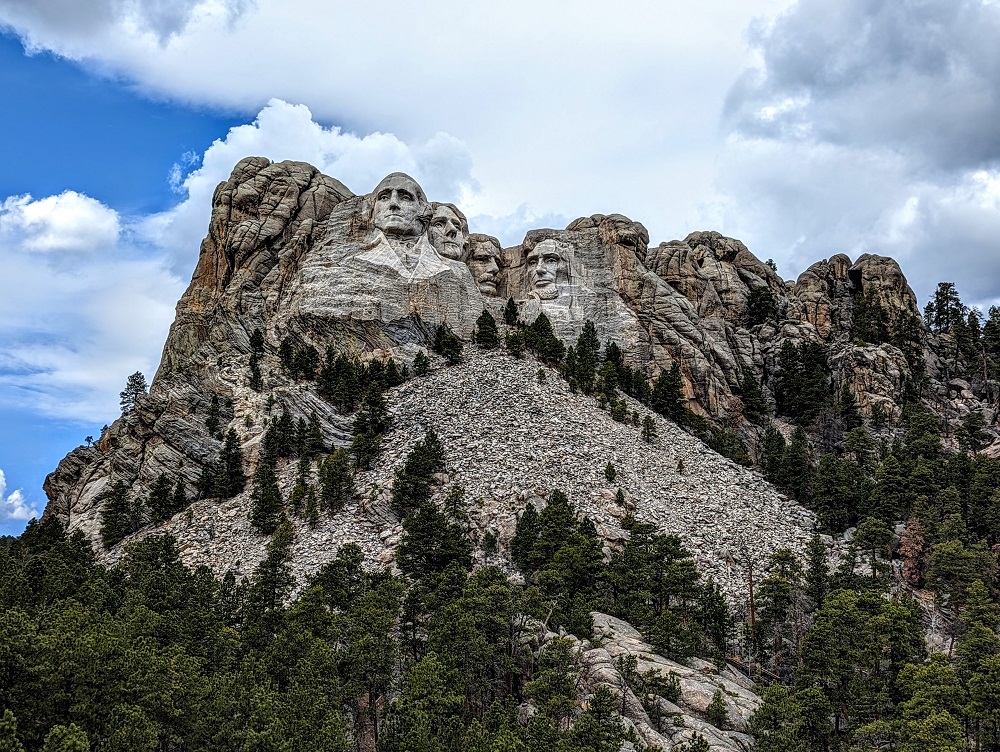
Something that should be noted is that the land Mount Rushmore National Memorial was constructed on has a problematic history. An 1868 treaty granted ownership of the Black Hills mountain range – which Mount Rushmore is part of – to the Lakota people. However, the US seized the land back eight years later following the Black Hills War (also known as the Great Sioux War of 1876).
In 1980 the Supreme Court ruled that the Sioux hadn’t been given adequate compensation for the land, awarding them just over $100 million compensation. This money was – and continues to be – rejected as they don’t want compensation; they understandably want the land back. Having faces of presidents of the nation that took the land from them carved into the mountain therefore adds insult to injury for them.
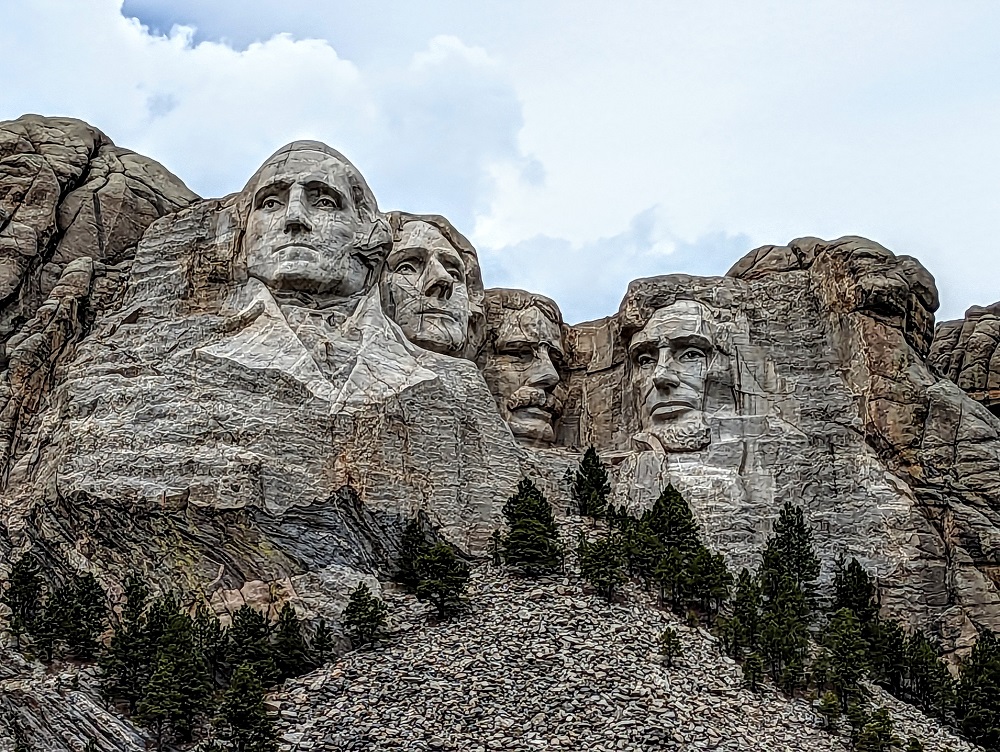
That part of its history is pretty much glossed over when visiting Mount Rushmore National Memorial, so it’s worth learning more about it. It therefore adds some conflict to the enjoyment of the site. The memorial celebrates the history of the United States, but which was made possible due to land being taken from its owners.
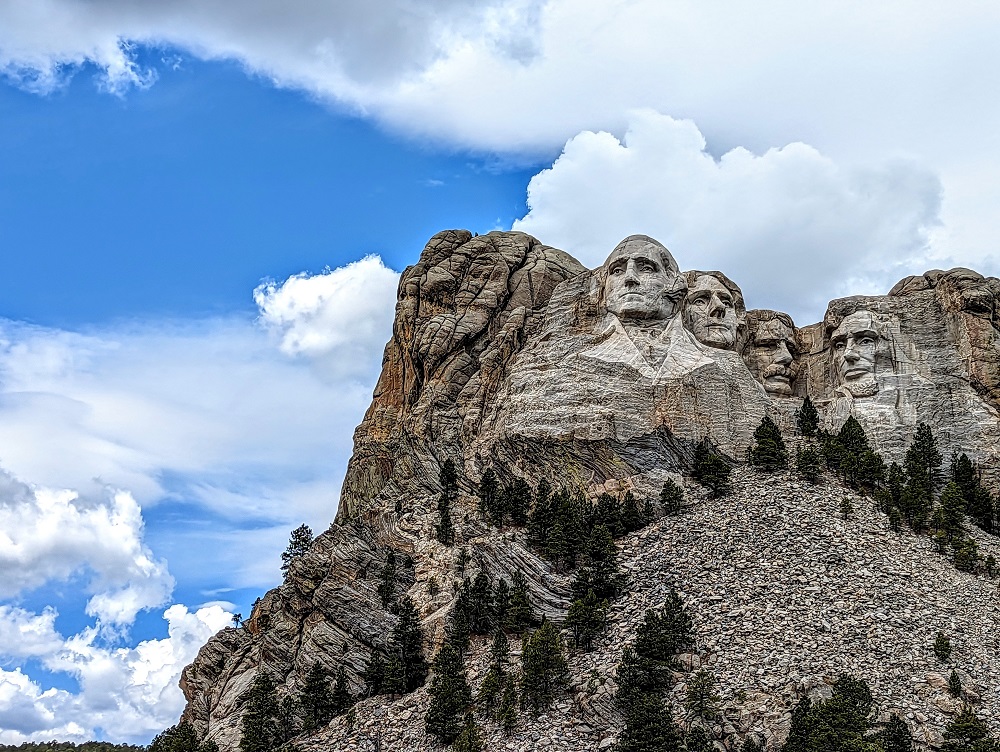
From late May until the end of September, the National Park Service runs a nightly program in the amphitheater:
Focusing on the presidents, patriotism, and the nation’s history. Beginning with a ranger talk, this program continues with the film “Freedom: America’s Lasting Legacy” (captioned) and culminates with the lighting of the memorial.
The amphitheater is open throughout the day too for guests to take a seat and enjoy the view above them.
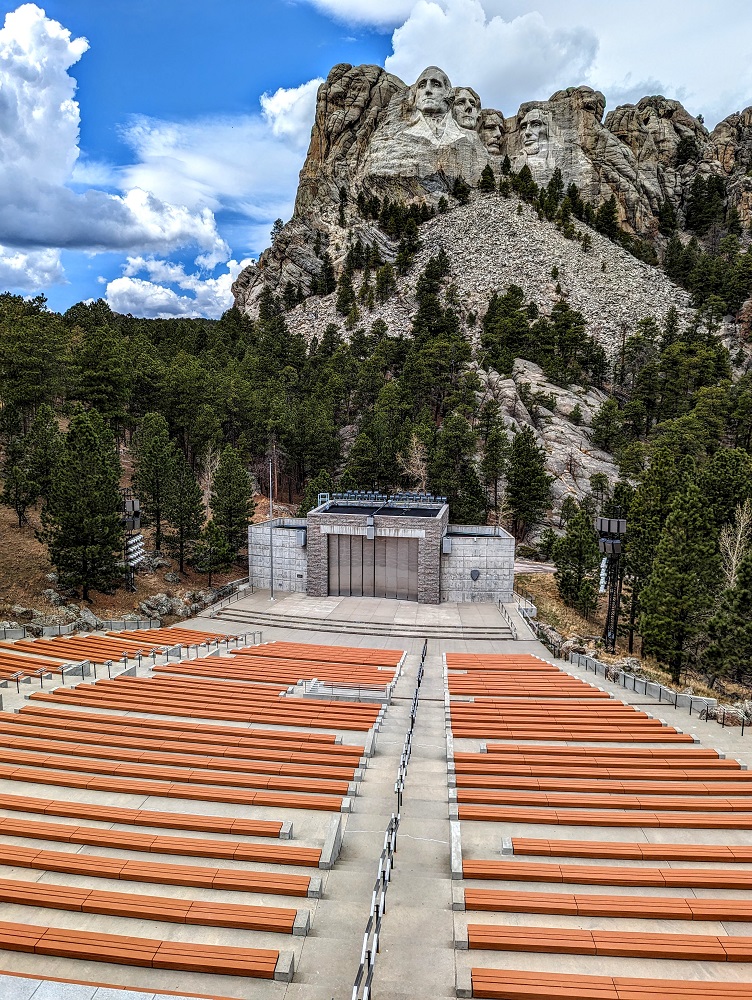
On the level below the main viewing area is the visitor center. This features a museum area which shares all kinds of information about the memorial – its sculptor Gutzon Borglum, videos showing how it was created and more.
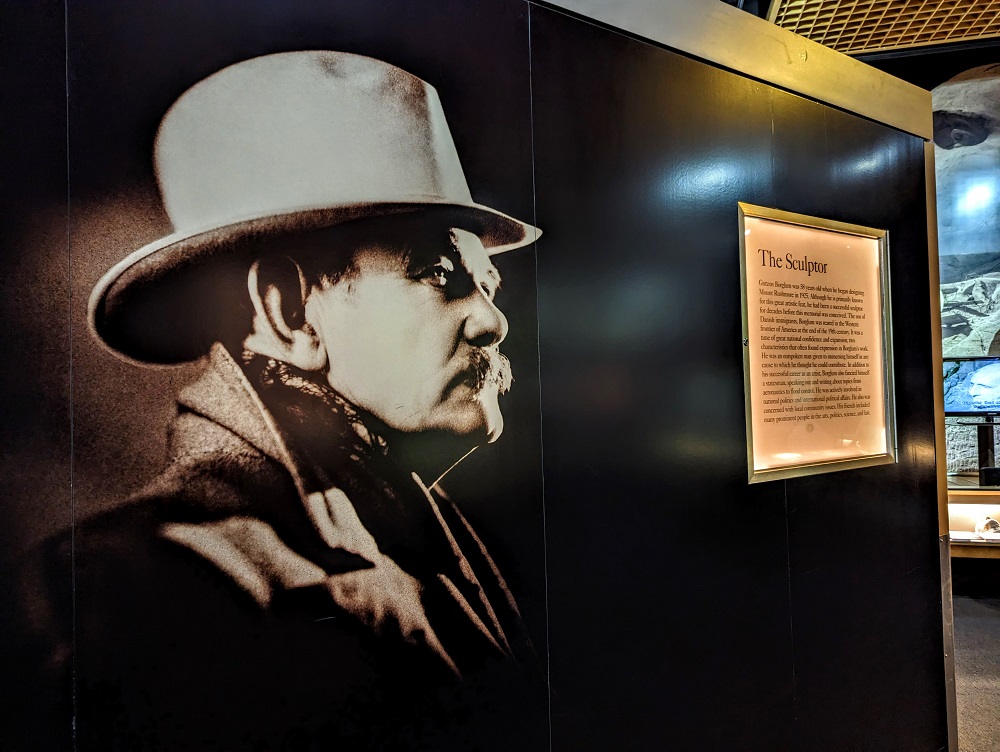
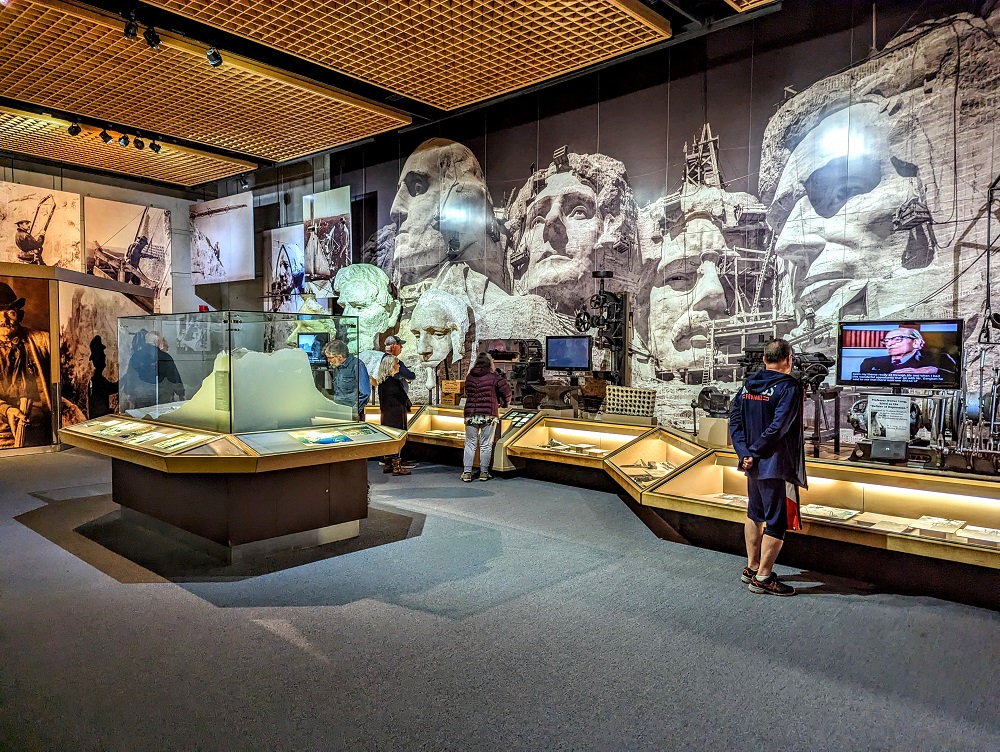
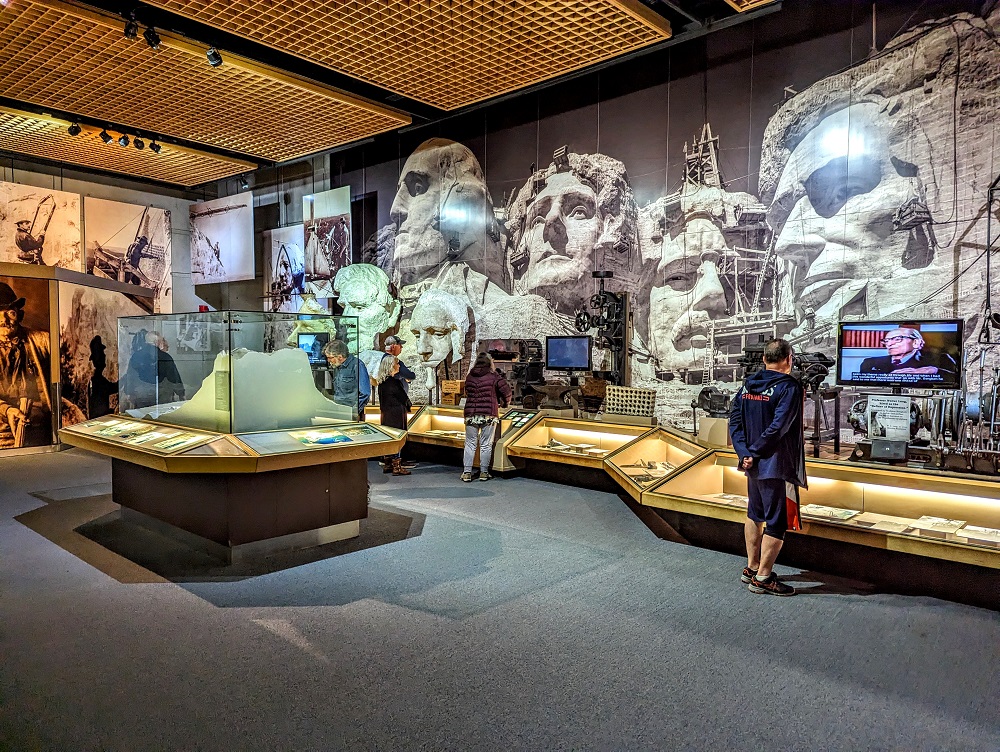
That includes scale models of faces that were created before Mount Rushmore’s construction, with plumb lines that helped ensure everything was sculpted correctly on the mountain.
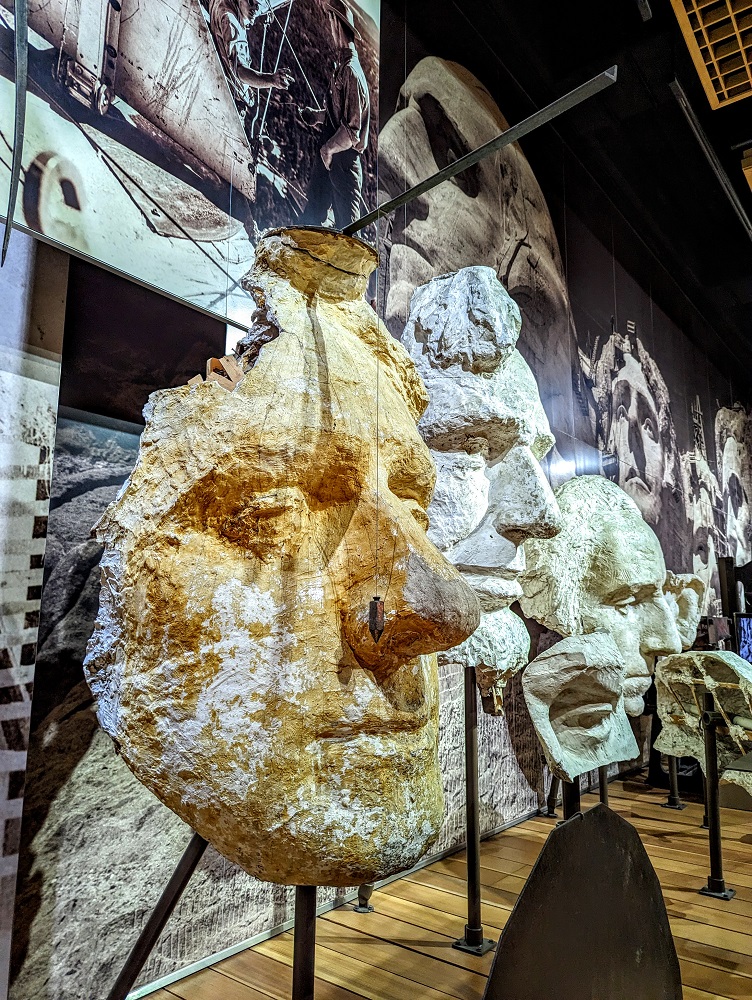
After checking out the visitor center, I decided to get closer to the rock face by walking along the Presidential Trail.
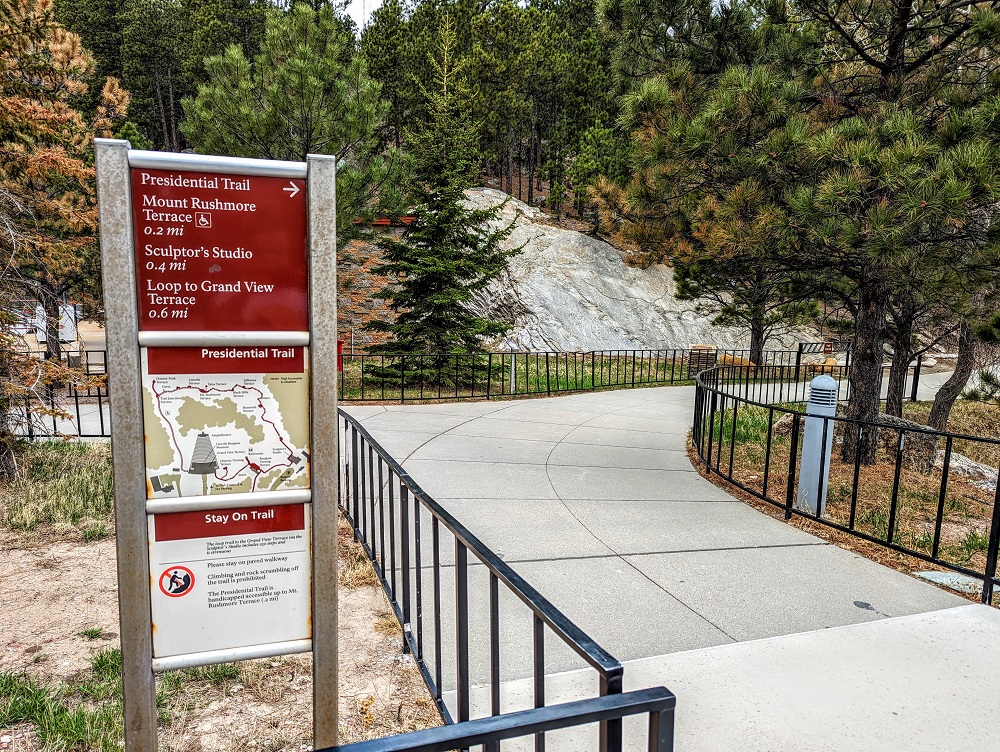
Not only does the trail take you closer to the memorial, but it gives you some interesting vantage points of the presidents’ faces.
The face of George Washington is 60 feet tall, has a 20 foot nose, eyes that are 11 feet across and a mouth that’s 18 foot wide.
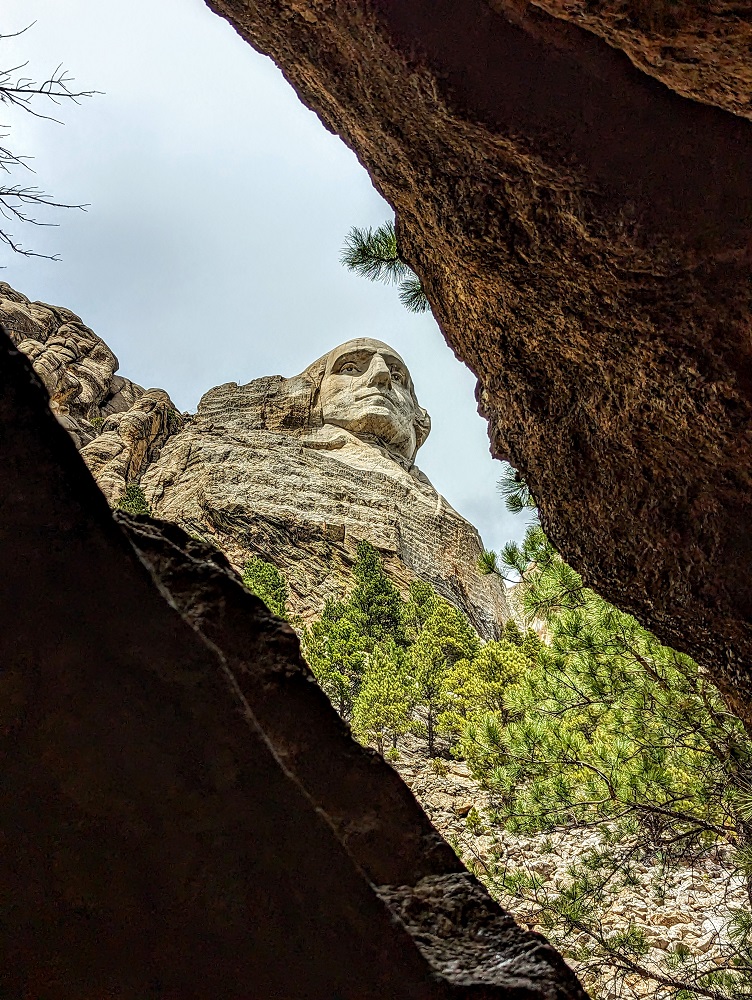
Growing up in the UK, I’d assumed that the four presidents featured on Mount Rushmore were the first four presidents of the United States. That’s not the case though – they were chosen to symbolize different reasons:
- George Washington – 1st president – signifies the struggle for independence and the birth of the Republic
- Thomas Jefferson – 3rd president – symbolizes the territorial expansion of the United States
- Abraham Lincoln – 16th president – represents the permanent union of the states and equality for all citizens
- Theodore Roosevelt – 26th president – celebrates the role of the United States in world affairs and the rights of the common person
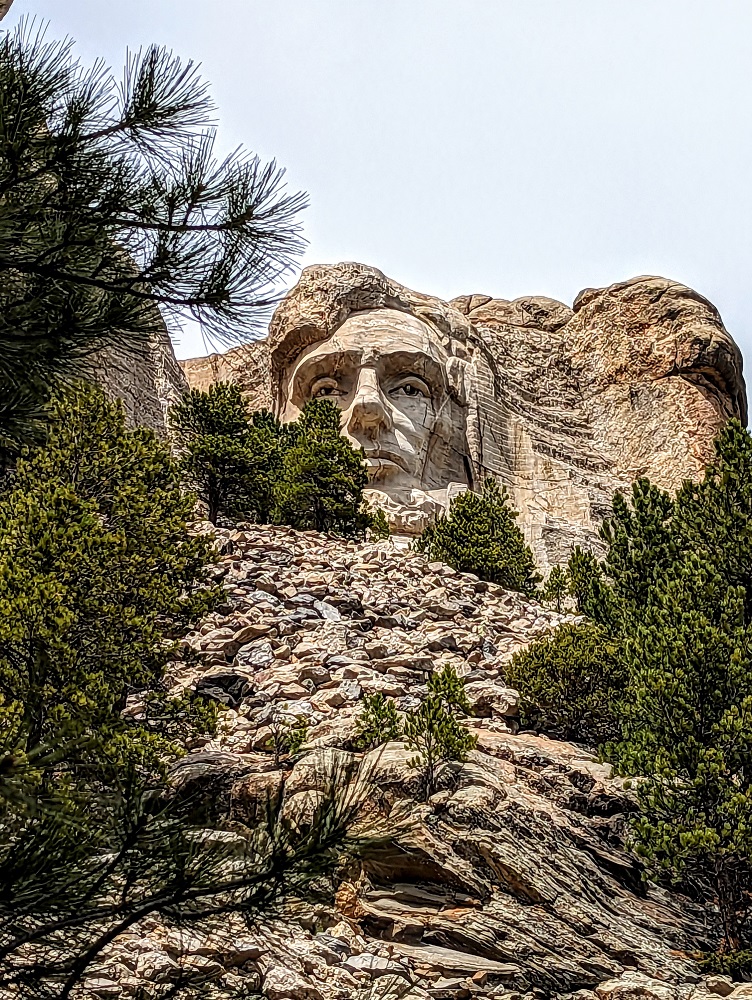
Considering how well-sculpted the faces are, I was surprised to learn during our visit that 90% of the carving of Mount Rushmore was done using dynamite. The result of that can be seen with the long trail of rubble beneath the memorial.
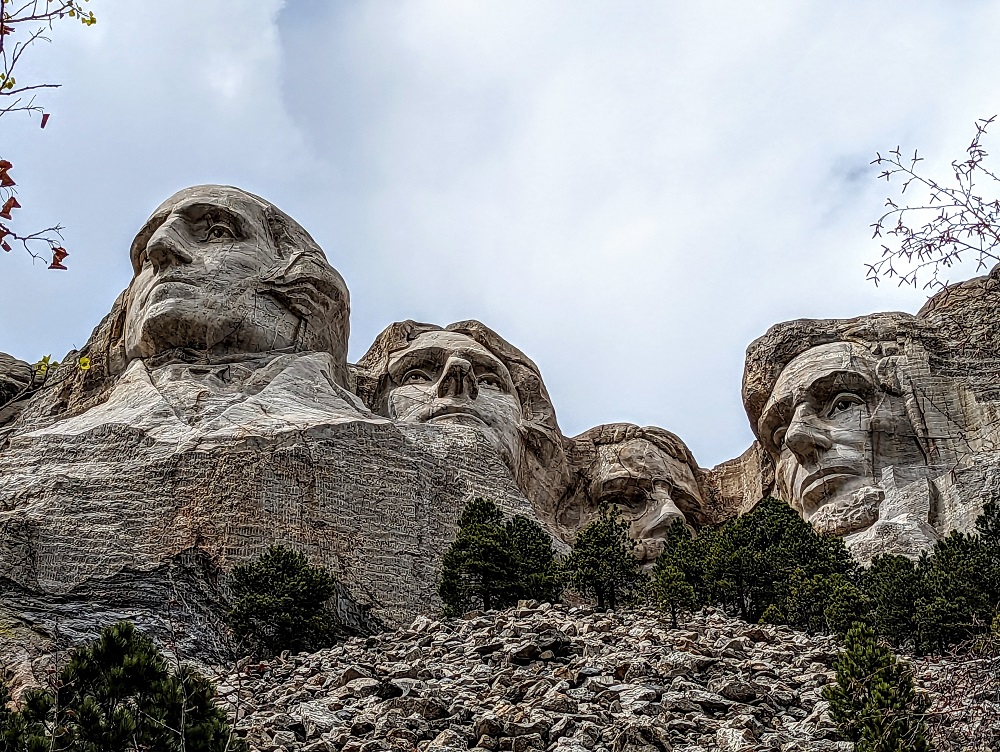
The Presidential Trail leads you down a long walkway, so I was worried that I was going to have to take a corresponding number of stairs to get back up.
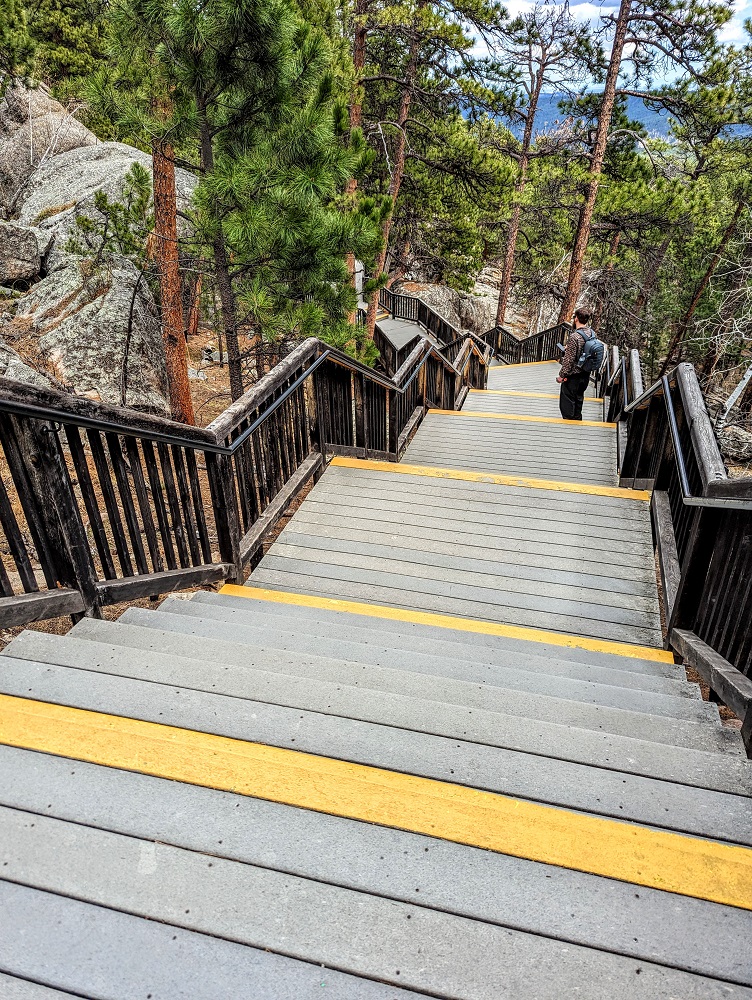
Thankfully the trail loops around up a hill which has a more gradual incline and so wasn’t very strenuous. The walk back up gives some great views of the presidential faces too.
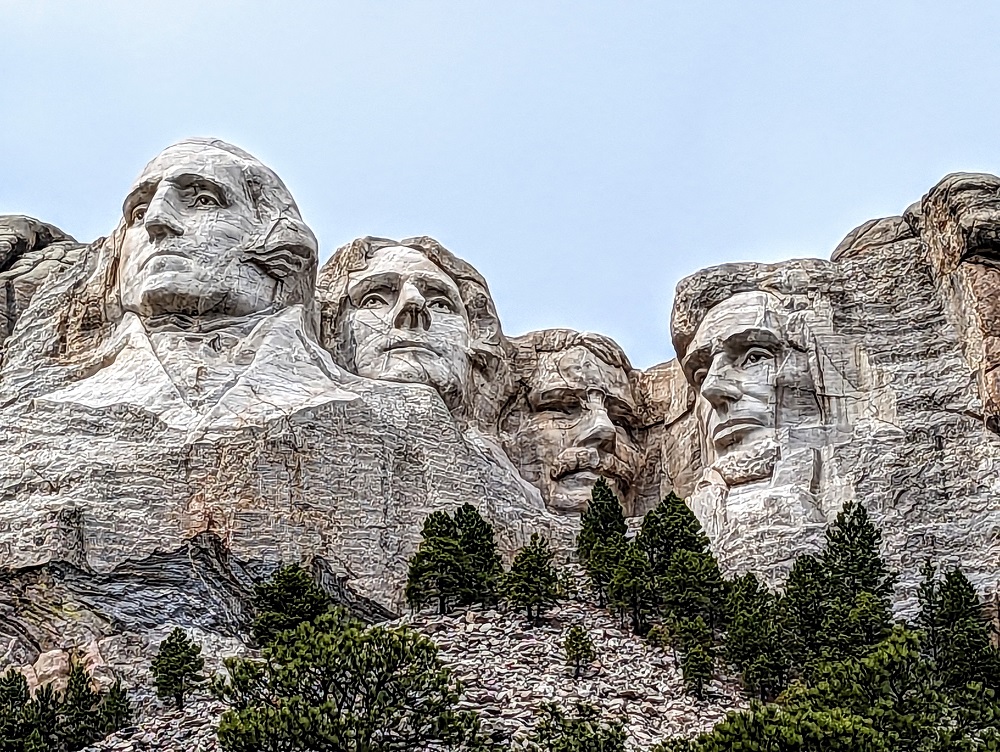
After leaving the site, we took Hwy 244 to the west. Along the way there’s an area where you can pull off to see the profile view of George Washington. Here’s a link to its location on Google Maps in case you’d like to get directions.
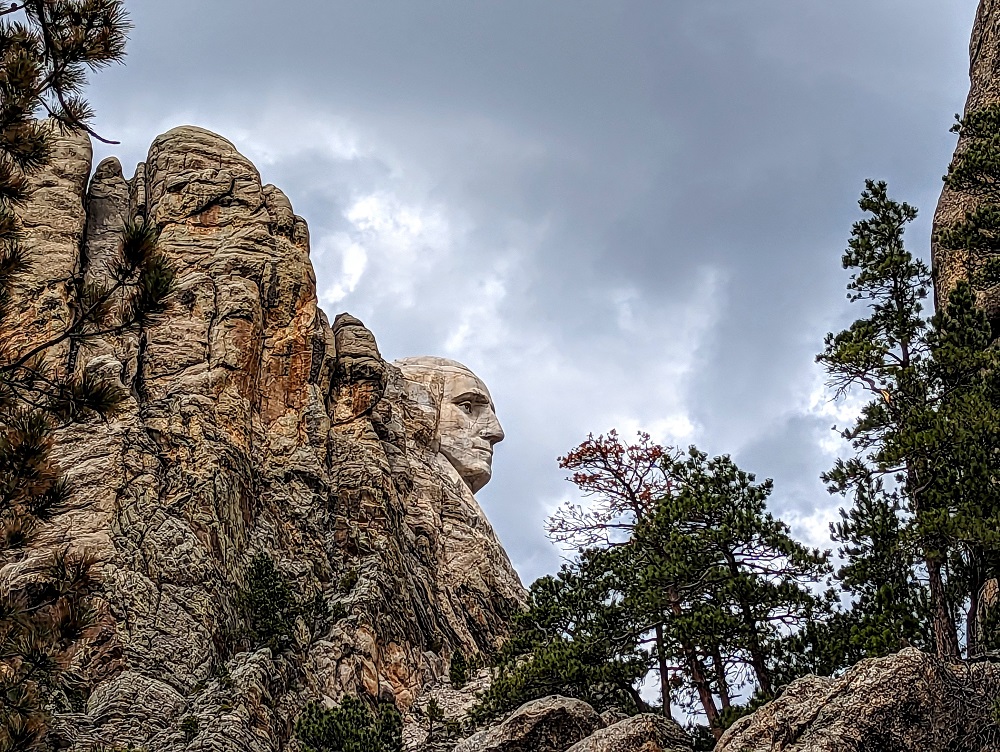
[…] our list of potential places to visit while staying in Rapid City. Some of those were must-dos like Mount Rushmore, Custer State Park, Badlands National Park, etc. Another was eating at Bokujo […]